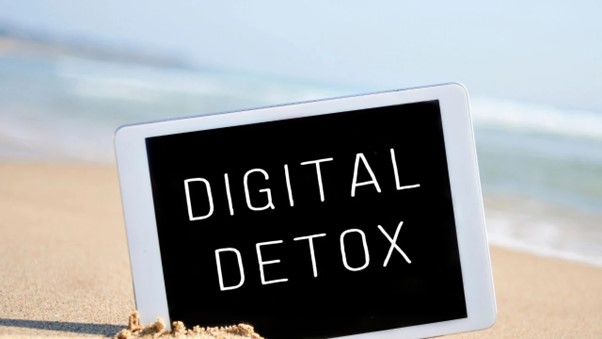There is no secret about how much time we spend gazing at screens in this modern era. iPhones, tablets, laptops, televisions – it appears that attachment to technology is our modern curse. However, constant screen exposure has serious repercussions. Considering the time put into fronting those computers, people can experience high levels of fear, lack of sleep, or diminished productivity.
That is where the digital detox comes in. In the following post, you will learn how to cut the screen time for maximum results. We guarantee you reduction in the time spent on digital gadgets and partial ease with your semi-true existence. No matter if the duration you use with your items each day decreases or how you unwind, we have your back. Given the present age of production, my brand recognizes the value of prioritizing mental tranquility and personal feelings.
Extensive research studies on our approach will make your relationship with technology more positive. So, if you have been longing to take a break from your computer and focus on other things – ideally your own productivity gains – consider joining us in the digital detox.
The Importance of Reducing Screen Time
The utilization of screens has become common in our 21st-century society. Indeed, most of us are constantly on our screens digitally from the time we wake up until the time we switch them off for the night.
Nevertheless, the significance of embracing limited screen usage should not be underrated. Overuse of screens causes many negative effects on physical and mental health. One of these effects is the disruption of circadian sleep patterns. To illustrate, blue light from screens at night can disrupt the sleep-wake cycle, causing difficulty falling asleep and promoting unrestful sleep.
Increase exposure to screens also leads to sedentary behavior, which is associated with a higher risk of obesity and various other health conditions.
Furthermore, too much screen time is not favorable to our mental health. Prolonged exposure to social media introduces feelings of anxiety, depression, and low self-esteem. This is because most people’s posts or pictures online are unrealistic, which makes it easy to compare their lives which is nonexistent.
In addition, It also promotes increased procrastination and declining productivity and more difficulty in the social field of work.
Understanding Digital Detox
In a nutshell, a digital detox is a time frame in which we willingly take breaks from our digital devices to consume less screen time. Essentially, it is an opportunity to reset and restore our relationship with technologies. One should disconnect and reclaim their time — reallocating it to activities that support their overall health and wellness.
Evidently, digital detox can be as short as for a few hours a day free from screens or can be several days or even weeks of disconnection. A digital detox implies that such a results in more, not less screen time.

Benefits of a Digital Detox
Digital detoxing has several positive implications on our mental, emotional, and physical health. Here are some of the benefits of reducing screen time:
First, reduced screen exposure improves sleep quality and duration, as when we power down electronic gadgets or avoid exposure to screens before bed, the brain is given time to unplug and prepare for sufficient sleep.
Second, social media and constant use of smartphones and computers may result in anxiety and stress, necessitating breaks from the digital world to live in the present. Focusing on major duties can be aided by getting away from digital gadgets due to decreased distractions. In the long term, less time spent in front of screens can help one focus on work and complete tasks quicker.
Finally, it allows us to spend more time on real-life connections since we use our screen time to mediate meaningful human communications. It also helps us to be present during crucial discussions, promotes closeness, and creates memories. Finally, quitting the digital world boosts mental wellness, since the more screen strategies we use, the less time we can spend living our lives.
Setting Goals for Reducing Screen Time
However, before undertaking the digital detox, you should understand your own aims and objectives. Moreover, the clear vision of the results will allow you to stay motivated and engaged. The following recommendations will help you to define your goals effectively:
Specific – define what you would like to achieve during the digital detox . It is critical to understand whether you want to cut the screen time by two hours daily or quit all the social media platforms for one week.
Measurable – how will you understand that you have achieved the goal? It is easy to use apps or devices that display the time spent on the screen and set the limit.
Achievable -while it is important to set restrict but feasible goals, it is better to start with a smaller screen time or shorter time the device is off.
Realistic -will you be able to accomplish them? Wanting to stay offline for a month is not realistic, while a weekend or a week is more achievable.
Time-bound –should your objective have a designated time frame? It is crucial to have exact to and from dates since it will help you achieve the goal on time.
Accountable – tell the friend or family member about your goal; it will make you feel more responsible for accomplishing it if someone else knows about your challenge.
Reward – establish smaller milestones and reward yourself for accomplishing them; it will keep you motivated.
Practical Strategies for Reducing Screen Time
Reducing screen time is an area that requires a conscious effort and readiness to change one’s existing lifestyle habits. The following practical strategies may help you reduce your reliance on the digital world:
Set device limits. Technology offers various features enabling us to establish time restrictions for particular apps or categories. This approach encourages time awareness and can help gradually cut down on screen time.
Designate screen-free zones at home. Choose several areas where screens would be prohibited; for example, the dining table, the bedroom, etc. It will help you create a space where off-screen activities and human interaction are promoted.
Establish screen-free times. Think about several hours during the day when the usage of screens would be prohibited: for example, one-hour post-awakening and once again an hour before bed.
Identify offline activities. Everyone has favorite pastimes that do not require a screen. Spend time reading, walking, or engaging in outdoor activities, spend time with your family without gadgets. Fill your life with worthwhile off-screen experiences.
Include mindfulness practices. Practice more awareness in your life by engaging in mindfulness activities like meditation, yoga, or just shutting completely off and taking a couple of minutes to look around.
Seek support. It would help if you joined communities of like-minded persons preparing for a life that involves less digital technologies. An accomplished goal will be more achievable if people who support your ambitions accompany you.
Creating a Digital Detox Plan
If you want to maintain a structured and productive approach to your digital detox journey, consider making a personal plan. Implement the following steps to help you formulate the plan:
Analyze your current screen time: use specific apps or device settings that can track your screen time for one week. This practice will show you exactly how much time you spend on screens and help you establish trends and exceptions.
Establish specific goals: based on your previous achievements, decide how much and how often you will do the digital detox, as well as any particular habits or applications you want to target.
Diversify your activities list: consider which activities you would rather do stay without the screen. It may include some hobbies, physical activities, socializing with friends, or discovering new skills.
Schedule your activities: use a planner or a schedule app to book specific hours during days or weeks for offline engagements.
Anticipate challenges: presume what activities or behaviors you may find hard to change and devise some strategies to deal with that.
Modify your plan: consider monitoring your progress and making variations accordingly. Adjust the plan whenever you feel that some alterations might bring you extra fun.
Tips for Maintaining a Healthy Balance
Finally, it is important to observe a healthy balance of technology and offline activities even after completing a digital detox. Here is how you can maintain a good relationship with screens:
Be mindful of your screen time: continuously evaluate your screen habits and make changes if you see any of the signs throughout your detox.
Set daily screen limits: To maintain a balance and avoid falling back into excessive technology use, include screen time limits in your daily routine even after your detox.
Integrate technology-free rituals into your day: Make some daily rituals free of screens. For example, you can make dinner table rules about no screens or set aside time daily without a screen.
Ensure a healthy sleeping pattern: avoid screens at least one hour before bed to relax your brains.
Regular exercises: sports activities will help you maintain your physical well-being and make you less dependent on screens for entertainment.
Relationships: Make an effort to strengthen your relationships during your detox. Face-to-face conversations, events, and other screen-free memory-making events will help you bond while keeping you away from your mobile devices.

Tools and Apps to Help with Screen Time Management
Modern digital age offers a plethora of tools and apps that can help manage and reduce screen time. Below are just a few examples of popular digital solutions:
Moment. This app helps track how much time you spend staring at your screen. It can also give daily reports about each user and remind you of predetermined limits to cut down on screen time.
Forest. A unique approach that creates a more gamified interaction to incentivize less screen time. With every minute that a person does not check their phone, the tree in the app grows. If you open your device again, the tree dies.
Flipd. This app helps do just that, flip your device over to the other side and disconnect for a certain amount of time. It offers special locked mode and scheduling, as well as “distraction-free study timer”.
StayFocused. A simple browser extension blocks access to sites that waste a user’s time. It can be turned on and off at any moment to help stay focused and not drift to a time-sink website a person was not supposed to open.
Offtime. Another customizable app will help you shut down unnecessary notifications or restrict access to certain apps. It can create profiles for different scenarios and diversify the shutdown experience on bandar togel.
Final Thoughts
In conclusion, due to the drastic increase in the amount of time spent on screens in the digital era, reducing screen time has become more necessary than ever. Digital detox prevents the adverse health effects of too much exposure to screens, including poor sleep quality, mental health problems, and decreased productivity.
Setting clear goals, implementing practical strategies, and developing your personalized digital detox plan will help you regain control of your time and dedicate it to more offline activities and human interaction. Finally, remember to be mindful and seek help when needed, and utilize the available tools and apps to measure and maintain a balance between digital technology and human life experiences.
So, are you ready to start your digital detox journey? Take the first step and start enjoying the increased happiness and benefits of reduced screen time today. Your well-being will appreciate it.




